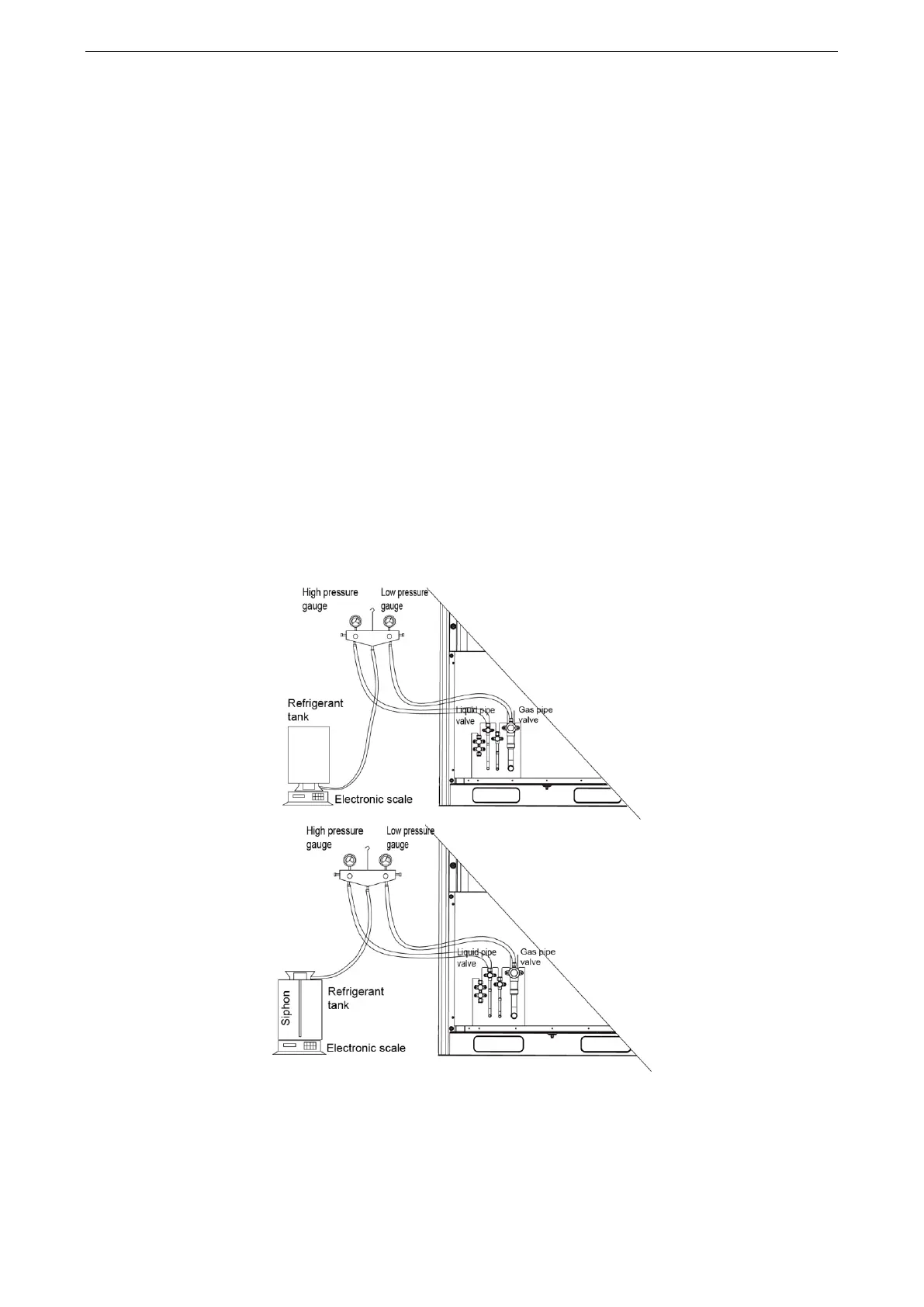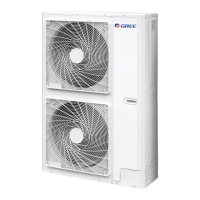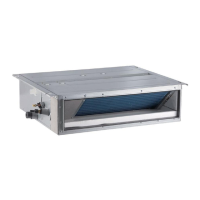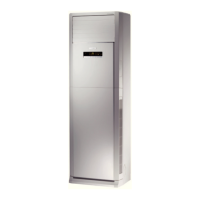GREE GMV5E DC INVERTER VRF UNITS SERVICE MANUAL
72
Modular combination of outdoor unit subjects to combinations that is currently available.
9.2 Method for Perfusing Refrigerant
Refrigerant perfusion for the VRF system is classified into pre-perfusion and perfusion during
running.
9.2.1 Refrigerant Pre-perfusion
Step 1: Connect the high pressure gauge pipe to the detection opening of the liquid pipe, the low
pressure gauge pipe to the detection opening of the gas pipe, and the medium gauge pipe to the
vacuum pump. Power on the vacuum pump to perform vacuumization and desiccation.
Step 2: After vacuumization and desiccation are finished, turn off valves of the high pressure gauge
and low pressure gauge. Disconnect the medium gauge pipe from the vacuum pump and connect it to
the refrigerant tank.
Step 3: Properly loosen the joint between the medium gauge pipe and the pressure gauge and
slightly turn on the valve of the refrigerant tank. Vacuumize the medium gauge pipe. After that, fasten the
joint and turn on the valve of the refrigerant tank completely.
Step 4: If the refrigerant tank is not equipped with a siphon, reverse the refrigerant tank and place it
on the electronic scale. Then record the current weight (m1). If the refrigerant tank is equipped with a
siphon, record the current weight (m1) directly.
Step 5: Turn on the valve of the high pressure gauge (while keep the valve of the high pressure
gauge turned off) and then perfuse refrigerant to the system. Record the change of weight of the
refrigerant tank.
Step 6: When all refrigerant in the refrigerant tank is perfused, record the current weight m2.
Step 7: Turn off the valve of the high pressure gauge and replace the refrigerant tank.
